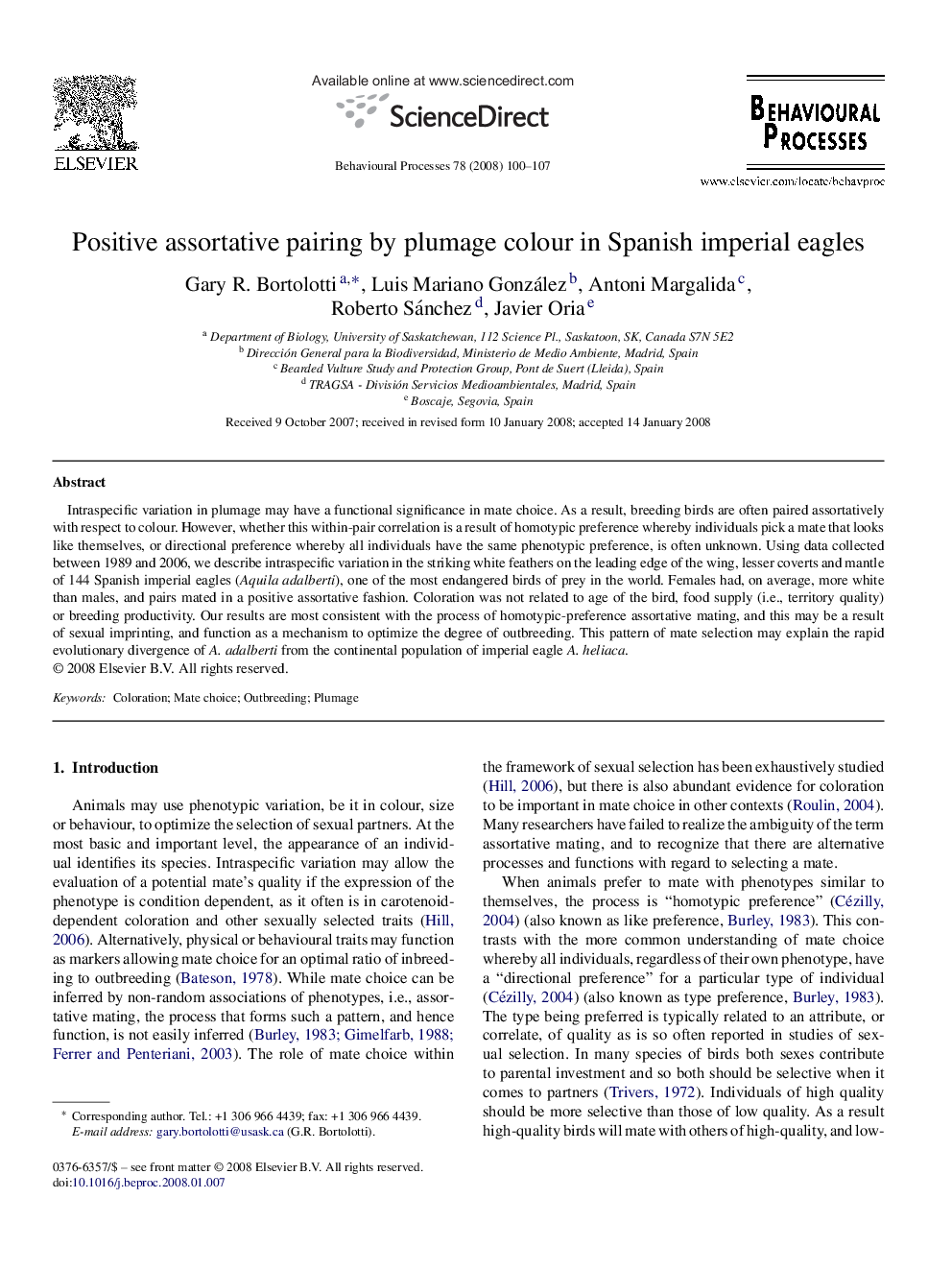| Article ID | Journal | Published Year | Pages | File Type |
|---|---|---|---|---|
| 2427598 | Behavioural Processes | 2008 | 8 Pages |
Intraspecific variation in plumage may have a functional significance in mate choice. As a result, breeding birds are often paired assortatively with respect to colour. However, whether this within-pair correlation is a result of homotypic preference whereby individuals pick a mate that looks like themselves, or directional preference whereby all individuals have the same phenotypic preference, is often unknown. Using data collected between 1989 and 2006, we describe intraspecific variation in the striking white feathers on the leading edge of the wing, lesser coverts and mantle of 144 Spanish imperial eagles (Aquila adalberti), one of the most endangered birds of prey in the world. Females had, on average, more white than males, and pairs mated in a positive assortative fashion. Coloration was not related to age of the bird, food supply (i.e., territory quality) or breeding productivity. Our results are most consistent with the process of homotypic-preference assortative mating, and this may be a result of sexual imprinting, and function as a mechanism to optimize the degree of outbreeding. This pattern of mate selection may explain the rapid evolutionary divergence of A. adalberti from the continental population of imperial eagle A. heliaca.
